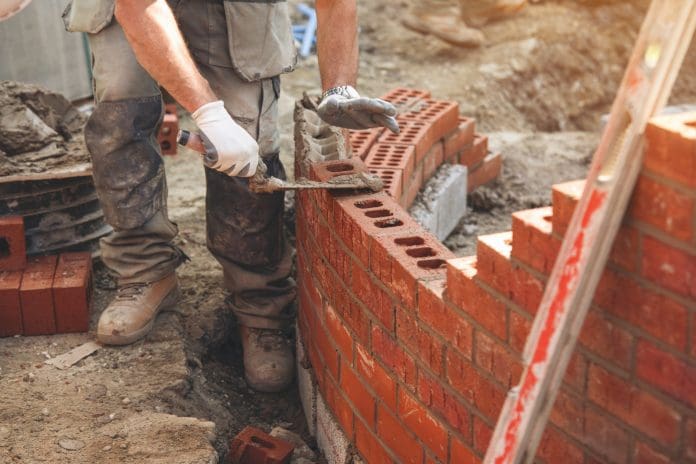The government’s Plan for Change announced before Christmas set out a number of “ambitious – but achievable” milestones for this parliament, including skills development. Niamh Evans, policy and public affairs officer at the Chartered Institute of Building, asks if the changes will do enough to address the glaring workforce issues facing construction
The government is looking to press on with its ambitious agenda for construction for its five years in office, with promises of 1.5m new homes, a generation of New Towns, hundreds of green energy infrastructure projects and nationwide retrofit of properties, among other pledges.
On paper, it’s a bold vision for a sector pivotal to the UK’s future, yet it is no secret within the construction industry that this is a mighty ambition to work towards.
A glaring issue is workforce capacity. The Construction Industry Training Board (CITB) forecasts a need for 250,000 additional workers by 2028 to meet demand. With this prediction made prior to the 2024 General Election, there is high chance a revised forecast will predict a larger shortfall with the government’s ambitious plans.
But even with a clearer idea of how many workers will be needed, the question remains: will the government’s proposed solutions to the construction skills crisis measure up?
Transforming construction skills policy
Alongside its pledge to instigate a nationwide programme of building, the government has also made significant pledges to transform the construction skills policy landscape.
Notably, this includes establishing the new public body, Skills England, to oversee skills policy, replacing the Apprenticeship Levy with a wider funding model and most recently the commitment to reform the post-16 education system.
While these measures have the potential to alleviate the construction skills crisis, we are still awaiting the detail of these reforms and measures of success.
One reform we are awaiting to hear the detail on is the replacement of the much-criticised Apprenticeship Levy with the Growth & Skills Levy. On the surface, this signals a promising reset. Yet is it worth considering that the current levy has failed at its core objective of improving the number of apprenticeships completed.
Without a clear strategy to boost the number of apprenticeships taken up, in addition to the new levy’s objective to fund a wider range of training outside apprenticeships, the new funding model risks not improving the number of construction apprentices at all.
Some would say that the antidote is the government’s more recent announcement of the new set of construction skills hubs across the country. These dedicated centres aim to deliver up to 5,000 new apprenticeships annually in key trades such as carpentry, bricklaying and scaffolding.
While this is certainly a step in the right direction, and it is pleasing to see the government recognises the urgent need to invest specifically in construction skills, the hubs should not be seen as a silver bullet.
The hubs alone will simply not deliver the volume of people needed in trades to meet the government’s pledges.
There is also risk of the accelerated apprenticeships offered within these hubs will be rushed at the cost of training quality, particularly at a time with a renewed focus on having a competent workforce.
Furthermore, the new skills hubs are only targeted at some of the main construction trades, but the skills gap in construction goes beyond bricklayers and scaffolders. Specialist technical and managerial skills in the sector remain in a shortfall.
The recent government move to defund Level 7 qualifications is a concerning sign that here is not going to be the support to address skills gaps in all corners of the industry, with the defunding standing to cut access to training pathways for senior roles in the sector, such as in architecture.
Can the training system deliver?
Labour, like many governments before it, has made sweeping promises about transforming the built environment without first looking in detail at the logistics involved.
Take education and training capacity, for instance. Many further education colleges and training providers are simply not equipped to handle a significant influx of construction trainees.
A chronic lack of teaching staff in construction disciplines is a major bottleneck, often due to the pay disparity with working in industry. Without urgent investment in further education and training capacity, the education system simply won’t be able to deliver the volume of highly skilled workers required to do meet government ambitions.
Even if reforms for skills are implemented rapidly – and effectively – the impact will take years to materialise. Over the parliamentary term, the sector could face an influx of newly qualified, inexperienced workers.
While more hands on deck are certainly welcome, there are also risks. A sector flooded with fresh talent but lacking seasoned professionals to guide them could undermine the quality of construction.
The lack of detail on upcoming skills reforms leaves uncertainty on whether there will be the future workforce available for the large-scale developments and infrastructure projects the government wants in quick supply. Without detailed plans or timelines, construction businesses will be left in limbo and without the confidence to commit to projects.
The government’s construction pledges are admirable in their ambition but unfortunately seem divorced from reality. Bridging the skills gap requires more than setting ambitious
targets and leaving industry to fill in the blanks – it demands a realistic appraisal of what the sector can deliver, when it can deliver it and what government support it will need to get there.














